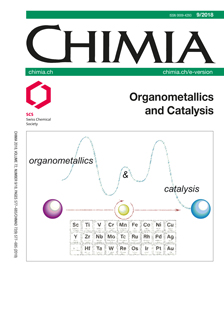Challenges and Opportunities in DNA-based Asymmetric Catalysis
DOI:
https://doi.org/10.2533/chimia.2018.630Keywords:
Asymmetric catalysis, Bio-hybrid, Chirality, Dna, Double helixAbstract
The biological importance of nucleic acids for the storage, expression and regulation of genetic information is now well understood. By taming the chemical synthesis of these biomolecules, chemists have been able to engineer new architectures based on the ability of DNA and RNA to fold into secondary or even more complex tertiary structures with applications in medicinal chemistry, diagnostics or even material sciences. Exploiting the fascinating helical structure of DNA and RNA to develop new chiral bio-hybrid catalysts capable of promoting highly stereoselective transformations under mild and eco-compatible conditions is also an emerging area of research. In this short review, we report our recent results in the field of DNA-based asymmetric catalysis as well as the challenges and promising perspectives that lie in front of us.Downloads
Published
2018-09-01
Issue
Section
Scientific Articles
License
Copyright (c) 2018 Swiss Chemical Society

This work is licensed under a Creative Commons Attribution-NonCommercial 4.0 International License.
How to Cite
[1]
M. Smietana, S. Arseniyadis, Chimia 2018, 72, 630, DOI: 10.2533/chimia.2018.630.







